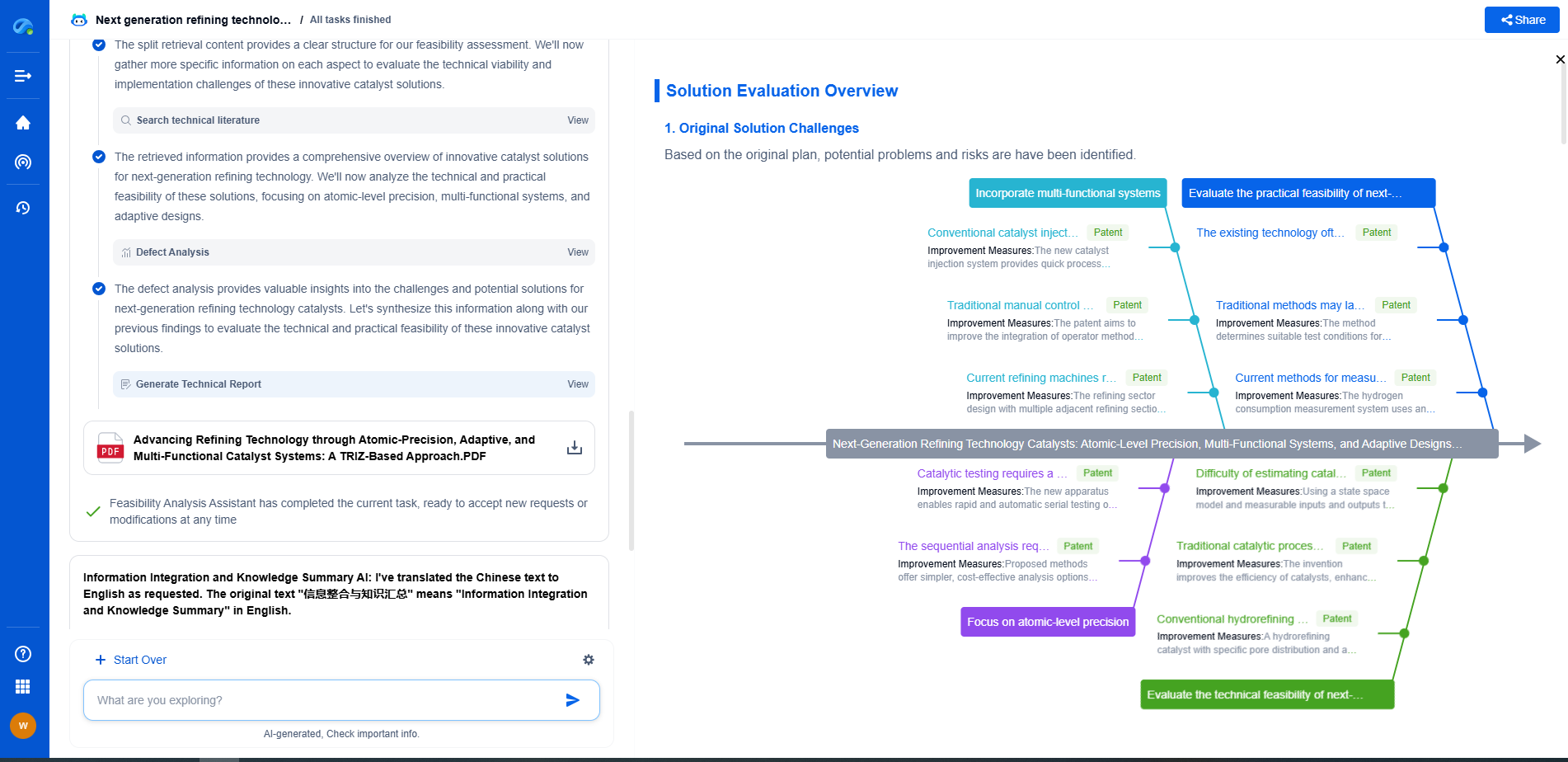Wearable Health Sensors: Clinical-Grade vs Consumer-Grade Accuracy
JUL 14, 2025 |
Wearable health sensors have revolutionized the way we monitor our health and wellness. From tracking heart rates during workouts to monitoring sleep patterns, these devices provide real-time health insights. However, not all wearables are created equal. A significant distinction exists between clinical-grade and consumer-grade sensors, particularly concerning their accuracy. Understanding these differences is crucial for making informed decisions about which device suits your health monitoring needs.
Clinical-Grade vs Consumer-Grade: Defining the Difference
Clinical-grade wearable sensors are designed to meet rigorous standards of accuracy and reliability similar to those used in medical settings. These devices often undergo extensive testing and require regulatory approval before being marketed. They are typically used by healthcare professionals and researchers who need precise data to make critical health decisions.
On the other hand, consumer-grade wearables are generally more accessible and affordable, designed for everyday use by the general public. While they provide valuable health insights, their accuracy can vary widely. They are primarily intended for personal wellness tracking rather than clinical diagnosis.
Accuracy Matters: The Impact on Health Monitoring
Accuracy is a pivotal factor when choosing between clinical-grade and consumer-grade wearables. Clinical-grade sensors offer high precision, which is essential in medical contexts where even slight discrepancies can lead to significant health consequences. For example, accurate heart rate monitoring can be critical for patients with cardiovascular conditions, where data inaccuracies could result in misdiagnosis or inappropriate treatment.
Consumer-grade wearables, while improving over time, may still exhibit variations in data accuracy. Factors such as sensor quality, placement on the body, and user activities can influence their performance. For general wellness purposes, a slight margin of error may be acceptable. However, for users requiring precise health monitoring, such as athletes optimizing training regimens or patients with chronic conditions, consumer-grade inaccuracies can be limiting.
Technological Advances: Bridging the Gap
The gap between clinical and consumer-grade sensor accuracy is narrowing due to technological advancements. Innovations in sensor technology, data processing algorithms, and artificial intelligence are enhancing the reliability of consumer wearables. Many companies are investing heavily in research and development to improve their devices' accuracy, making them more appealing to a broader audience.
Moreover, collaborations between technology companies and healthcare providers are fostering the development of hybrid devices that offer both consumer-friendliness and clinical-level accuracy. These developments are promising, as they democratize access to reliable health monitoring without compromising on data quality.
Considerations for Choosing the Right Device
When deciding between a clinical-grade and a consumer-grade wearable, several factors should be considered. First, evaluate the purpose of the device. If you need continuous and precise monitoring for a medical condition, a clinical-grade device might be necessary. Conversely, if your goal is to maintain general wellness and fitness, a consumer-grade wearable could suffice.
Additionally, consider the features offered by the device. Clinical-grade sensors often provide more comprehensive data and analysis, whereas consumer-grade devices typically emphasize user-friendly interfaces and lifestyle integrations. Budget is another important consideration, as clinical-grade sensors tend to be more expensive due to their advanced capabilities and regulatory compliance.
Conclusion: Making an Informed Choice
Wearable health sensors offer unprecedented opportunities for personal health monitoring, but understanding the differences in accuracy between clinical-grade and consumer-grade devices is vital. While consumer-grade wearables continue to improve, clinical-grade sensors remain the gold standard for precise health data. By assessing your specific needs and understanding the capabilities of each type of device, you can make an informed decision that empowers you to take control of your health with confidence.
From 5G NR to SDN and quantum-safe encryption, the digital communication landscape is evolving faster than ever. For R&D teams and IP professionals, tracking protocol shifts, understanding standards like 3GPP and IEEE 802, and monitoring the global patent race are now mission-critical.
Patsnap Eureka, our intelligent AI assistant built for R&D professionals in high-tech sectors, empowers you with real-time expert-level analysis, technology roadmap exploration, and strategic mapping of core patents—all within a seamless, user-friendly interface.
📡 Experience Patsnap Eureka today and unlock next-gen insights into digital communication infrastructure, before your competitors do.
- R&D
- Intellectual Property
- Life Sciences
- Materials
- Tech Scout
- Unparalleled Data Quality
- Higher Quality Content
- 60% Fewer Hallucinations
Browse by: Latest US Patents, China's latest patents, Technical Efficacy Thesaurus, Application Domain, Technology Topic, Popular Technical Reports.
© 2025 PatSnap. All rights reserved.Legal|Privacy policy|Modern Slavery Act Transparency Statement|Sitemap|About US| Contact US: help@patsnap.com

